I was just arriving at work this morning when I caught a glimpse of the Campus Vixen. I was near her den, so stopped the car and looked around. It took a while to spot her. She was hiding in the nearby undergrowth. There was probably too much traffic about for her to approach, including a van which parked across the path she would have taken. So these shots are the best I could manage through the heavy vegetation. And yes, as ever, she has a rabbit.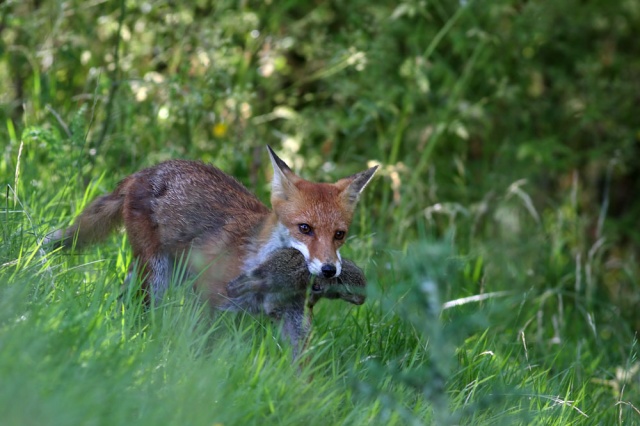
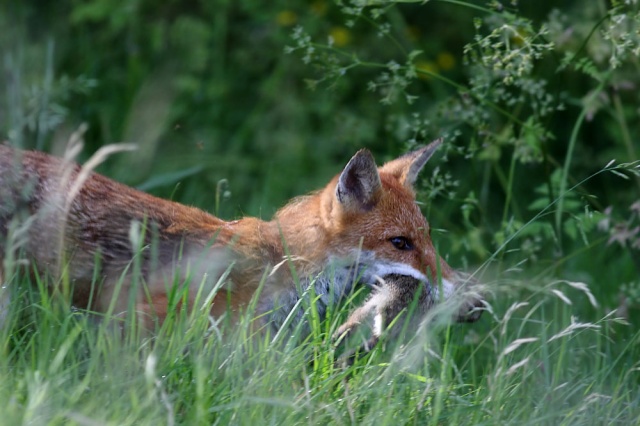
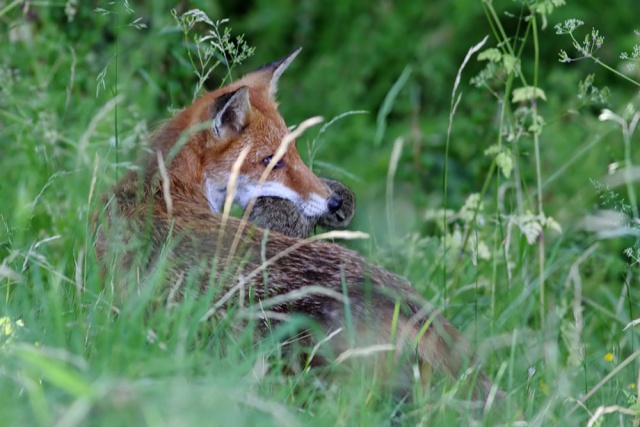
I did hang around for a few minutes to see if she would emerge, but without any success. It was good to see that she's still around, and that she's being sensibly cautious of the traffic.
Tonight it's raining heavily (oh the joy that is the British summer), and I've only taken brief forays into the garden. The Bold Vixen did pass through, looking somewhat bedraggled and muddy. I risked the rain for a couple of minutes. This first shot is taken from the shelter of the back door.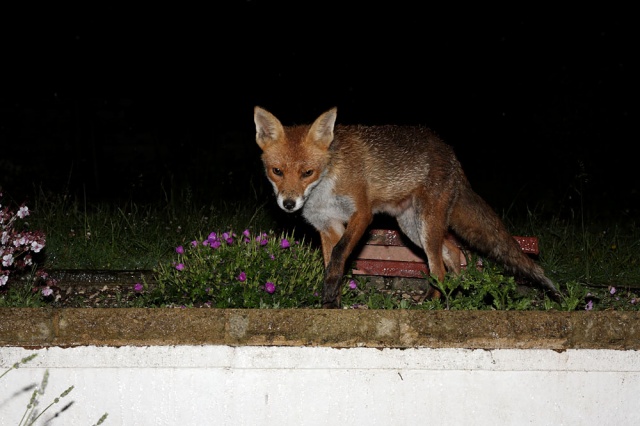
And then at the back of the garden…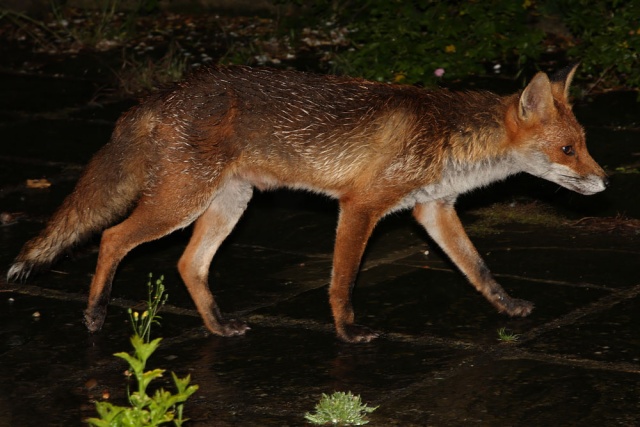
I'm fascinated by the differences in how the urban and rural foxes get by. The garden foxes are primarily scavengers, and though they do hunt I suspect a large part of their diet is 'found' food, with a regular circuit being followed on a nightly basis. The campus and downland foxes on the other hand are adept hunters. I've posted this picture before, but I think it encapsulates the rural fox in its element. It's a shot of a vixen taken in mid-May. Which makes three vixens in this post, not two.
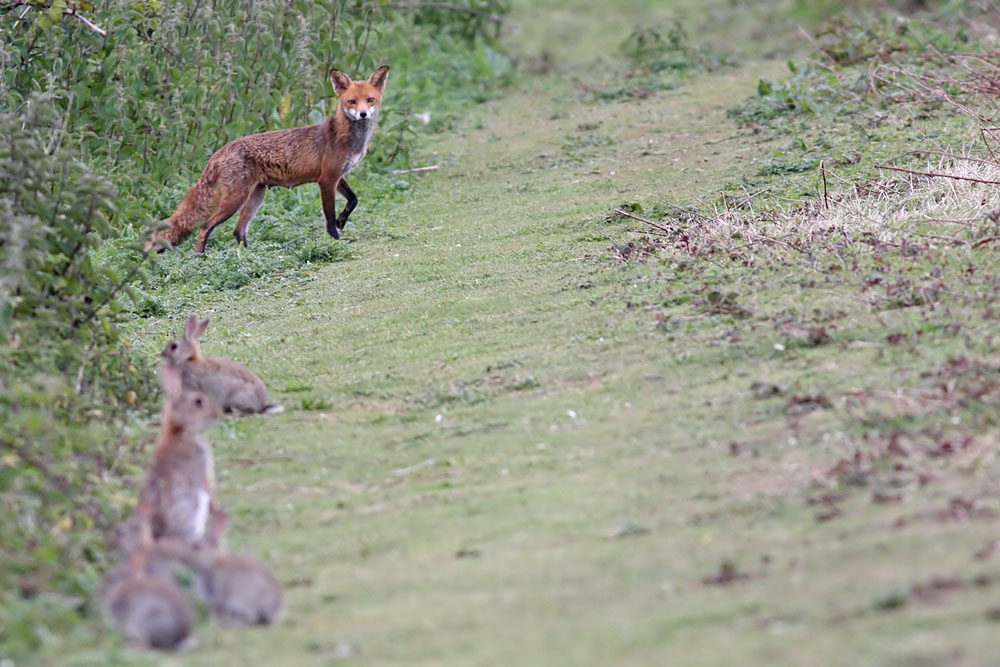
Camera note: the campus vixen was photographed with the EF 400mm f/5.6L USM lens, as was the closing shot. I had the shorter EF 24-105 F4L IS USM on the camera tonight.
gdare
9 Jun 2009"I suspect a large part of their diet is 'found' food"
Now I remember a photo of a Bold Vixen with that piece of meat in her mouth, again 😆
Words
9 Jun 2009Darko, exactly! The rural
rabbitsfoxes will catch several rabbits a day at this time of year, which means that the urban ones must be getting large quantities of food from somewhere. They do catch things (I've seen them with birds, rabbits, frogs), but they scavenge a lot as well. Research by Bristol University showed that town foxes in Bristol would scavenge up to around 60% of their food. Rural foxes in Wiltshire had a diet of over 70% rabbit and related mammals. A huge difference in diet, and presumably a difference in how they spend their time getting the food.gdare
9 Jun 2009:up:
cakkleberrylane
9 Jun 2009Very interesting. Would the differences in diet affect the overall health of the foxes?
Words
9 Jun 2009Darko, thanks!
Words
9 Jun 2009Lois, most of the research suggests they all do fine. Populations adjust to the amount of food, and they have a hugely varied diet. They'll do fine on bugs, earthworms and berries, as well as small birds and mammals. Dense populations seem to be more prone to disease outbreaks, but I suspect rural populations are less well monitored so it may be difficult to tell. There has been surprisingly little research carried out, though that is slowly changing.
SittingFox
10 Jun 2009Rain and tall grass. It must be summer! :whistle:
She seems a very astute hunter. I'm currently re-reading J. Henry's wonderful book on foxes in northern Saskatchewan and it's interesting how much less group-orientated they seem compared to our foxes. Come to think of it, I don't think he ever saw those foxes eating earthworms – if so, that's kind of curious.
Words
11 Jun 2009Adele, yes typical summer weather though the forecast is improving again. Odd that Henry didn't see foxes eat earthworms. There must have been a plentiful alternative supply of food about.
Flying Red Fox Blog
28 Jun 2009In the last shot i wonder if she thought * aww too much choice!" 😆
Thats what many students at the restaurant i work at say and they take ages to decide before going off with a plate of chips hehe.
Words
28 Jun 2009Mark, very possibly 😉 Maybe she was just 'window shopping' :yikes: